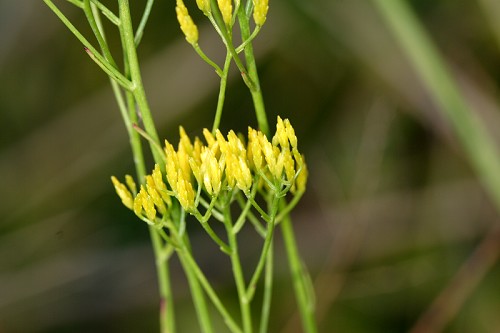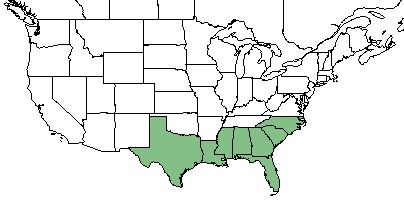Difference between revisions of "Bigelowia nudata"
(→Description) |
(→Distribution) |
||
| Line 27: | Line 27: | ||
==Distribution== | ==Distribution== | ||
| + | ''B. nudata'' is found in the Southeast United States, ranging from Texas to North Carolina <ref name= "USDA/>. | ||
| + | |||
==Ecology== | ==Ecology== | ||
===Habitat=== <!--Natural communities, human disturbed habitats, topography, hydrology, soils, light, fire regime requirements for removal of competition, etc.--> | ===Habitat=== <!--Natural communities, human disturbed habitats, topography, hydrology, soils, light, fire regime requirements for removal of competition, etc.--> | ||
Revision as of 19:23, 16 May 2018
| Bigelowia nudata | |
|---|---|

| |
| Photo from the Southeastern Flora Plant Database | |
| Scientific classification | |
| Kingdom: | Plantae |
| Division: | Magnoliophyta - Flowering plants |
| Class: | Magnoliopsida - Dicots |
| Order: | Asterales |
| Family: | Asteraceae |
| Genus: | Bigelowia |
| Species: | B. nudata |
| Binomial name | |
| Bigelowia nudata (Michx.) | |

| |
| Natural range of Bigelowia nudata from USDA NRCS Plants Database. | |
Contents
Taxonomic Notes
Synonyms: Chondrophora nudata
Varieties: Bigelowia nudata var. australis, Bigelowia nudata var. nudata
Description
B. nudata, also known as the pineland rayless goldenrod, is a native perennial forb that is a member of the Asteraceae family [1]. The species also consists of rhizomes which it uses to propogate [2].
Distribution
B. nudata is found in the Southeast United States, ranging from Texas to North Carolina [1].
Ecology
Habitat
Conservation and Management
Cultivation and restoration
Photo Gallery
References and notes
- ↑ 1.0 1.1 USDA Plants Database URL: https://plants.usda.gov/core/profile?symbol=BINU
- ↑ fix later